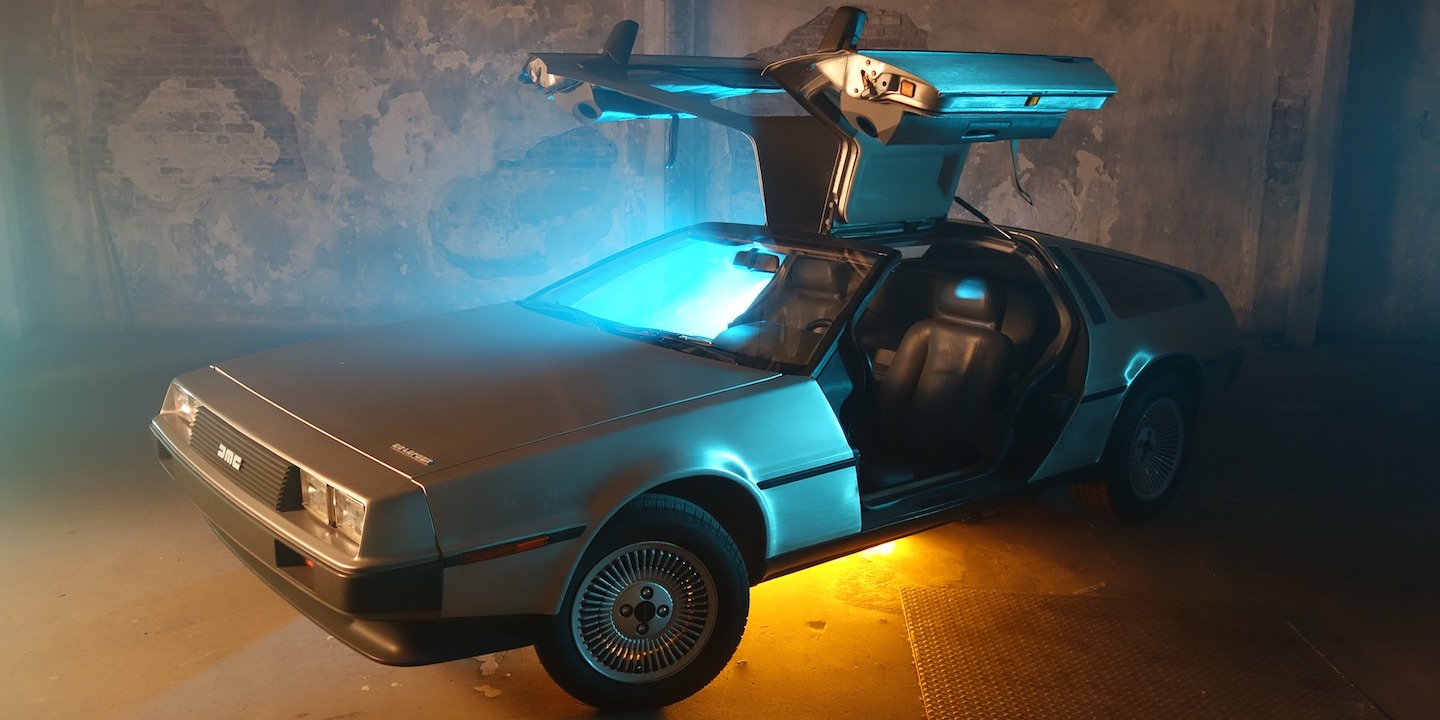Picture this: you’re cruising down the highway with your favourite tunes blasting on the speaker when suddenly, you notice the engine light flashing. Panic sets in as your car sputters to a stop. What do you do? If your answer is, “I have absolutely no idea”, then you’ve come to the right place. Having your car break down is every driver’s nightmare. However, being prepared and knowing what to do can significantly alleviate the situation and make the whole experience much less stressful and frightening. With that being said, here are 20 essential steps you should take if you ever find yourself with your car broken down.
1. Move to Safety
When you first notice a problem, your immediate priority should be to navigate your car out of traffic. It’s a matter of safety! If it’s possible, guide your vehicle to the side of the road, a parking lot, or another safe area where it won’t obstruct traffic. As you do so, make sure you use your indicators to signal your intentions to other drivers. Once parked in a safe location, activate your hazard lights to make your vehicle more visible, especially in low light or poor weather conditions. Ensuring safety for you and other drivers on the road is absolutely paramount during a breakdown.
 Photo by Clay Banks on Unsplash
Photo by Clay Banks on Unsplash
2. Assess Your Situation
Once you’re safely off the road, take a look at your car and try to identify what could be wrong with it. Listen for unusual noises, check for leaks, and monitor your dashboard for warning lights. If your car has overheated, do not open the hood immediately as it may be dangerously hot. Instead, wait for the engine to cool down. By carefully assessing your situation, you may be able to rectify the problem or at least communicate it more clearly to a mechanic.
 Photo by Luke Porter on Unsplash
Photo by Luke Porter on Unsplash
3. Alert Other Motorists
Regardless of the time of day or weather conditions, you always need to make your broken-down vehicle as visible as possible to others on the road. Step one is to always turn on your hazard lights, but if possible, you can do further steps such as placing down warning triangles or cones. Make sure you do this at a safe distance behind your car though! Alerting other motorists is crucial to prevent potential accidents that could be caused by your vehicle being in an unexpected location.
 Photo by Norbert Braun on Unsplash
Photo by Norbert Braun on Unsplash
4. Contact Roadside Assistance
Most insurance policies include some form of roadside assistance. So if you’re unable to fix the issue yourself, it’s time to give them a call. Provide them with as much detail as you can about your location and the problem with your vehicle. If you don’t have roadside assistance, it’s always a good idea to have a reliable towing service number saved in your phone for such emergencies.
 Photo by Jonathan Cooper on Unsplash
Photo by Jonathan Cooper on Unsplash
5. Stay With Your Vehicle
Depending on where you are, it’s generally safest to stay with your car while waiting for help. If you find yourself on a busy highway, stay inside the car with your seat belt on to protect yourself. In the case of a collision, you don’t want to be standing outside. However, if you’re in an isolated area and are feeling unsafe, you might want to consider finding a nearby public place where you can wait without feeling anxious. It all depends on where your car broke down.
 Photo by Egor Myznik on Unsplash
Photo by Egor Myznik on Unsplash
6. Have an Emergency Kit Handy
Every driver should have an emergency kit in their car, so if you’re reading this and realizing you don’t have one, it’s time to go out and get one! This kit can be a lifesaver. In it, there should be essentials like a first aid kit, flashlight, spare tire, basic tools, bottled water, non-perishable food items, and warm blankets. Having these items on hand can make the wait for assistance much more bearable and safe, especially if you’re stuck in adverse weather conditions or during the night.
7. Keep Essential Documents
It’s always good to have essential documents like your driving license, vehicle registration, and insurance information easily accessible. These documents will be needed if law enforcement gets involved or when roadside assistance service comes. They provide necessary information about your vehicle and validate your identity. To avoid any delays, just remember to keep these on hand.
 Photo by Arisa Chattasa on Unsplash
Photo by Arisa Chattasa on Unsplash
8. Notify Loved Ones
In the event of a car breakdown, let a family member or a close friend know about your situation and whereabouts. Share your location and the expected duration of the wait. This provides you with an additional layer of security that can help ease any worries about your safety. It’s also always good to let someone else know in case you need extra help or assistance.
 Photo by Hassan OUAJBIR on Unsplash
Photo by Hassan OUAJBIR on Unsplash
9. Cooperate with Professionals
When help arrives, whether it’s a mechanic, tow truck operator, or police officer, cooperate fully with them. Provide all the necessary information about your vehicle and its issues, and answer any other questions they have as clearly as you can. By being forthcoming and helpful, you can expedite the process of getting back on the road.
 Photo by Fortune Vieyra on Unsplash
Photo by Fortune Vieyra on Unsplash
10. Follow Up
Once your car is taken to a garage or mechanic, make sure to follow up on repairs. Understand what caused the breakdown and what preventive measures can be taken to avoid it in the future. Regular maintenance checks are key to preventing future breakdowns and ensuring your vehicle is always in top shape, so never delay scheduled visits to the mechanic. We sure don’t want another breakdown on the horizon!
 Photo by Maxim Hopman on Unsplash
Photo by Maxim Hopman on Unsplash
11. Keep a Basic Understanding of Car Mechanics
Look, while we understand not everyone is a gearhead, having a rudimentary understanding of your vehicle’s operation can be tremendously beneficial. Knowing how to check oil levels, change a flat tire, or jump-start your car can sometimes be enough to get you back on the road. If you want to learn, you can check out online tutorials or classes that can teach you these basics. Not only can this knowledge help in a breakdown, but it can also prevent one if you’re able to identify issues before they become significant problems.
 https://unsplash.com/photos/s4d_ESS0ylA
https://unsplash.com/photos/s4d_ESS0ylA
12. Practice Patience
A car breakdown can be incredibly frustrating, especially if it happens when you’re in a hurry and have to get somewhere. However, getting worked up won’t speed up the repair process. Try to keep a level head and stay calm - practice patience and use the waiting time productively instead. Whether you use the time to catch up on work, read a book, or simply try to relax, keeping a positive mindset can help alleviate the stress of the situation. It’s only as bad as you make it out to be!
 Photo by Abbas Tehrani on Unsplash
Photo by Abbas Tehrani on Unsplash
13. Prioritize Regular Maintenance
We’ve already briefly mentioned this, but it’s so important we’re making it a point on its own. Preventive maintenance is crucial in minimizing your chances of experiencing a car breakdown. This means getting your car serviced regularly and performing routine checks on the tires, brakes, engine oil, coolant, and other vital components. While it may seem tedious or costly, it’s done for a reason; regular maintenance can save you from more significant, more expensive problems down the line.
 Photo by Kenny Eliason on Unsplash
Photo by Kenny Eliason on Unsplash
14. Install a GPS Tracking Device
A GPS tracking device can be a lifesaver when your car breaks down. It provides you with accurate location details, making it easier for roadside assistance or tow truck services to find you, but it also helps give you peace of mind. Additionally, many GPS features have an emergency alert feature, which can be invaluable in notifying help in case of a breakdown. Having a good GPS or Map application downloaded on your phone can work just as well.
 Photo by Tobias Rademacher on Unsplash
Photo by Tobias Rademacher on Unsplash
15. Learn to Use Diagnostic Tools
Modern cars are typically equipped with sophisticated systems that monitor the vehicle’s functioning. Using an OBD (On-Board Diagnostic) tool can help you understand these codes and potentially identify what’s wrong with your car. While more advanced issues will certainly require a knowledgeable mechanic, basic diagnostics can give you some insight and help you relay information to the mechanic.
 Photo by Ravi Palwe on Unsplash
Photo by Ravi Palwe on Unsplash
16. Understand Your Car’s Warranty
Knowing what’s covered under your car’s warranty can potentially save you a lot of money and stress during a breakdown. Many manufacturers offer roadside assistance as part of the warranty. Even if the problem can’t be fixed on the spot, the car may be towed to a dealership for repair, often at no cost to you. So make sure you understand the terms and conditions of your car’s warranty to make full use of it.
 Photo by Erik Mclean on Unsplash
Photo by Erik Mclean on Unsplash
17. Inspect Your Car Before Long Trips
If you know you’re about to go on a long journey, before you even leave, you should always conduct a thorough inspection of your car. Check the tire pressure, fluid levels, and brakes; ensure the lights, wipers, and air conditioning are working correctly too. Doing this could save you from the nightmare of your car breaking down in the middle of a long trip!
 Photo by Anders Nord on Unsplash
Photo by Anders Nord on Unsplash
18. Keep Spare Parts Handy
Keeping some spare parts like fuses, bulbs, or belts in your car can help in certain breakdown situations. After all, it’s always better to be overprepared than not at all! Of course, this requires a basic understanding of how to replace these items, but with some knowledge and the right tools, you might be able to perform a temporary fix that gets you to a mechanic pronto.
 Photo by Rebecca Campbell on Unsplash
Photo by Rebecca Campbell on Unsplash
19. Invest in Good Quality Tires
Tires are one of the most common causes of vehicle breakdowns. Investing in high-quality tires and ensuring they are always in good condition is an excellent preventive measure. Sure, the upfront cost is nothing to smile about, but if it can prevent a breakdown in the future, it’s definitely worth it. Always check your tire pressure regularly, especially before long trips, and have a spare tire in your car if space permits.
 Photo by Robert Laursoo on Unsplash
Photo by Robert Laursoo on Unsplash
20. Use a Breakdown Cover
Breakdown cover is a type of insurance that covers you when your car breaks down. It offers services such as roadside assistance, car towing, and sometimes even car hire or accommodation if you’re far away from home. Depending on your policy, it may also cover the cost of repairs. Having this coverage can provide peace of mind and financial relief for those concerned.
 Photo by Michael Herren on UnsplashBy adding all these points to your breakdown preparedness and response plan, you’re more than well-equipped to deal with any car troubles that may come your way in the future. Prevention is always better than cure, so the first thing you should do is ensure your car is well-maintained and your emergency kit is well-stocked. We hope you stay safe on the road!
Photo by Michael Herren on UnsplashBy adding all these points to your breakdown preparedness and response plan, you’re more than well-equipped to deal with any car troubles that may come your way in the future. Prevention is always better than cure, so the first thing you should do is ensure your car is well-maintained and your emergency kit is well-stocked. We hope you stay safe on the road!








